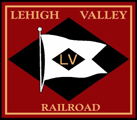-
Posts
12 -
Joined
-
Last visited
Contact Methods
-
Website URL
http://1stclass.mylargescale.com/scottychaos/
Profile Information
-
Gender
Male
-
Location:
Rochester, NY, USA
Contact Information
scottychaos's Achievements
Newbie (1/14)
-
I just googled for info on this product... there are other model railroad forums that discuss "scalecoat rinse away".. but the actual product seems to be called "scalecoat wash away".. although perhaps there are both? Bart, did you use "rinse away" or "wash away"? Scot
-
very nice! has anyone ever used the "scalecoat rinse away" on Aristocraft shells? Scot
-
I agree about the lack of interest in track work "over here"..but I think I know why.. its probably because in "large scale" most of us are stuck with really bulky and clunky code 332 "narrow gauge" track..even if we are running standard gauge. yes, there are other options, Aristo and USA trains do offer "American profile" (standard gauge profile) ties, and very nice code 250 track is available, but you have to specifically know it exists and seek it out..and most people new to the hobby dont know it exists..I will use my own experience as an example. My Dad got into Large Scale in the year 2000, we started getting him track to use to build his garden railroad.. at the time, we didnt think at all about different tie profiles or rail sizes..we just went out and got "G scale track".. The VAST majority of track that was easily available at shops was Aristocraft "European" ("Narrow gauge") tie profile, code 332, brass.. That was, and pretty much still is, the "standard" track..regular LGB track also looks about the same.. Over the course of about 5 years we got about 500 feet of it... My Dad has since passed away, and I now own all of that track.. Im now building my own garden railroad..guess what track im going to use! I am modeling 1/29 scale standard gauge..eventually I would like to replace all my track with code 250 "standard gauge tie profile" track.. but thats not going to happen any time soon.. So I think for a lot of large scale modelers, they start out by "just buying track"..and if you go out to "just buy track" you are 90% likely to end up with Aristo, USA trains or LGB code 332 "narrow gauge tie" track..and by the time we realise we might want "nicer looking track", and realize that track actually exists, its too late..and it would be super-expensive to replace all that track you already bought..so many people just don't bother. So we end up with 90% of US garden railroads having clunky track.. its good quality very robust track! nothing wrong with it operationally..but visually, it leaves a lot to be desired, especially for 1/32 and 1/29 scale standard gauge modelers.. Scot
-
nice car! I have considered also getting that particular car, just because I worked at Kodak for 17 years.. (I also have the Aristocraft Kodak tank car: http://www.museumofplay.org/online-collections/images/Z008/Z00867/Z0086731.jpg Scot
-

Scratch building a 1:13 Caboose
scottychaos replied to Screwy Nick's topic in Kitbashing & Model Making
cool..thanks for the clarification Nick.. I love the transfer caboose! I have a 7/8n2 Maine boxcar kit I need to start working on..maybe a project for this winter.. Scot -

Scratch building a 1:13 Caboose
scottychaos replied to Screwy Nick's topic in Kitbashing & Model Making
Nick, that turned out really nice! well done.. I noticed something though that makes me curious about the scale.. you said " a couple of dimensions that were mentioned in the article." what article was this? maybe its a trick of the camera, but your caboose door looks like its about 3 feet tall.. (compared to the track, which is 2-foot gauge in 7/8n2 scale) or are you perhaps running 32mm track? in which case, my perception would be off.. The exact scale doesn't detract from the model itself..but im just curious about those dimensions.. Scot -
As we said, the trench method is the only thing that works well in northern climates! its not the same thing as a French drain, because it isnt buried underground.. water does not congregate and stay trapped, because water easily drains through into the ground underneath.. the lining of the trench is usually weedcloth, with allows water through..or no lining at all. you never get a big ice cube under your railway, because the trench drains, and the trench is not *under* the railway, the trench is sitting on the surface.. The "trench roadbed" drains very well..water retention is a non-issue.. Scot
-
Joe, its looking really good! I think you are building your railroad the "best" was for our climate.. im also in Western NY, in the suburbs of Rochester..I have been a member of various large scale on-line forums for fourteen years now! and I am only now getting around to building my own garden railroad..(I helped my Dad build his from 2000 to 2009) Spending all that time on-line, and seeing how other garden railroads have been built around here, (I have been a member of the Rochester G-scale clube since 2000) https://sites.google.com/site/1991gggrs/ I have learned a lot about how to deal with our biggest issue..frost heave. There are really only two ways to build: If building on the ground..the tried and true "trench method" is the only thing that will be reliable and low-maintenance in our climate.. Dig a trench, line it with weed cloth if you like, fill it with gravel/ballast, and "float" the track in it.. If doing a "raised" railroad, you have to rest your supports ON the ground, not IN the ground.. the supports have to be on blocks that sit right on the surface, like this: then the blocks rise and fall with frost heave in the early spring, but they settle back to their original position. If you you put posts IN the ground, even only 6" to 12", they will heave right out of the ground in the spring.. or rise up, but cant lower back down, and you have a huge mess.. the only way to put posts in the ground is to go *below* the frost line, which has to be done for fence posts.. but around here that means 36 inches in the ground! or more.. which is very impractical.. So remember ON the ground not IN the ground, and it will work fine.. The many variations on "ladder roadbed" that you will find in books and on-line, where various roadbeds are made from PVC and plastic lattice, then buried under the track, IMO wont work well in our climate..too much frost heaving for that method..they get all jumbled up with frost heave.. I also wouldnt attempt a concrete roadbed.. So, basic trench "floating track" method, or posts on blocks that sit on the ground, not buried.. Thats fourteen years of observation talking! and thats how im going to build my railroad.. Scot
-

MTH Triplex - Erie (Russian Iron)(aka 'Blue') (One Gauge) - photos
scottychaos replied to Rayman4449's topic in Locomotives
Ray, one last thing.. I was just checking out your webpage, and I noticed on your webpage, and in this thread, you use the term "Russian Blue".. Thats not the correct term! There is no such thing as "Russian Blue" boilers.. MTH says "Russian Iron" on all their webpages and references to their various triplex models..which is the correct term. If you can, it would probably be good to change the subject line of this thread to "Russian Iron".. thanks, Scot- 27 replies
-

Differences between different manufactories
scottychaos replied to gscaleswe's topic in Rolling Stock
No they dont..it has been well established that the Aristocraft heavyweights are firmly 1/29 scale in all dimensions. Scot -

MTH Triplex - Erie (Russian Iron)(aka 'Blue') (One Gauge) - photos
scottychaos replied to Rayman4449's topic in Locomotives
Thanks Ray, good to know about the "photoshopped" images versus actual production models.. The "blue myth" really started to be seriously debunked when the National Park Service built their replica "Jupiter" and "199" locomotives at the Golden Spike National Historic Site in Utah, in 1979, and they really worked to get the colors right..including accurate Russia Iron boiler color: http://www.railpictures.net/images/d1/4/1/3/8413.1388471094.jpg It still didn't immediately catch on with manufacturers though..(change can be a slow process!) Then Fletch's 2002 Mason Bogie masterclass got it going for Large scale modeling.. which is what led to my Russia Iron webpage.. good to see the manufacturers are starting to pay attention! (the blue color on the MTH 0-8-8-0 represents the "old style" thinking about Russia Iron color..its *way* off.. it should be neutral grey..no blue at all.) Bachmann has been paying attention too! here is their depiction of Russia Iron on a model produced in the 1990's: http://farm4.static.flickr.com/3020/2983077046_97c88dd6a7.jpg And here is a similar paint scheme that they came out with only two or three years ago: http://1stclass.mylargescale.com/dennispaulson/IMAGE004.jpg the blue is gone! Scot- 27 replies
-

MTH Triplex - Erie (Russian Iron)(aka 'Blue') (One Gauge) - photos
scottychaos replied to Rayman4449's topic in Locomotives
MTH did a nice job on the Russia Iron boiler! its not nearly as bad as some other examples, (in terms of the blue coloration).. they toned down the blue *a lot* for the LS version..which is very good! Their Large Scale Erie triplex is *much* better than their O-scale version: MTH O-scale triplex: but still..on the the 1/32 scale model, they couldn't quite let go of the blue coloration all together! they left some blue in there..but it looks much better than other models..its a good start.. FYI, Russia Iron should have *no* blue tint to it at all..none: http://gold.mylargescale.com/Scottychaos/maine-2foot-color/page2.html Scot- 27 replies
.png.a4fb2273837361b3bbaa7a1d8a4c8996.png)

